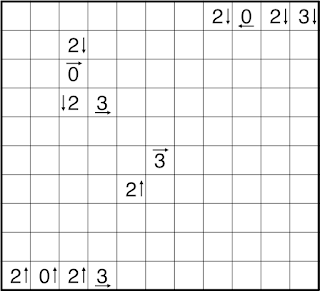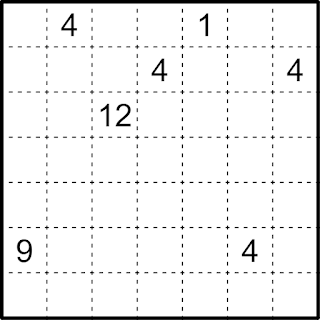Rules: Shade some cells such that each region outlined in bold contains as many shaded cells as small given numbers (if any) in top-left corner of the cell indicate.
- Shaded cells form blocks of orthogonally connected cells. Each such block is comprised of two or more distinct smaller blocks that are each wholly contained in a different region, thus separated by grid borders. For each block, there can only be one sub-block per region.
- Shaded cell blocks can only touch diagonally.
- Each given big number belongs to a block, giving its size, and each block contains exactly one given number.
- All unshaded cells must be connected in a single group of orthogonally connected cells.
- Any given black cells indicate the corresponding cell cannot be shaded.
About: This puzzle was invented by Anurag Sahay.










.png)






